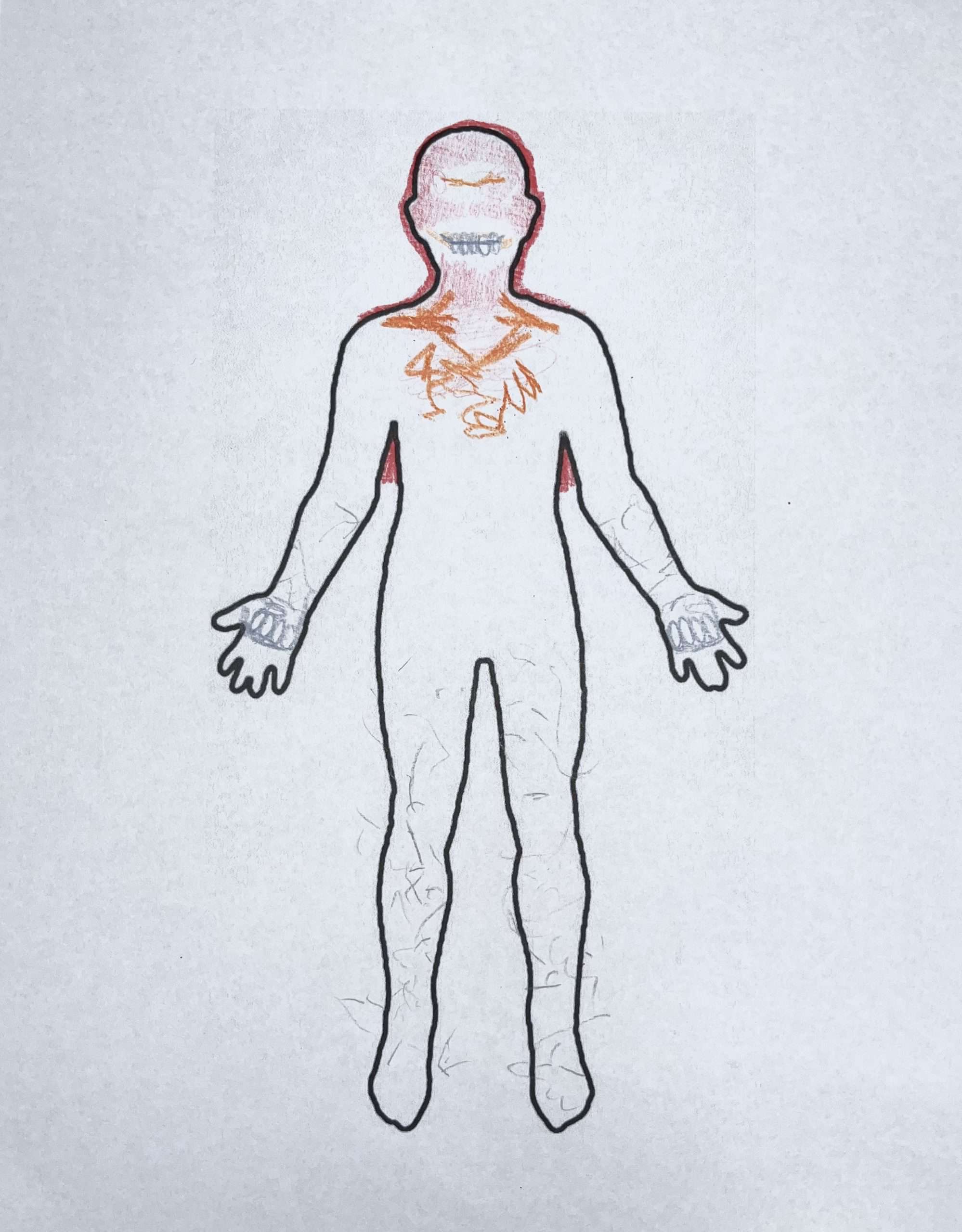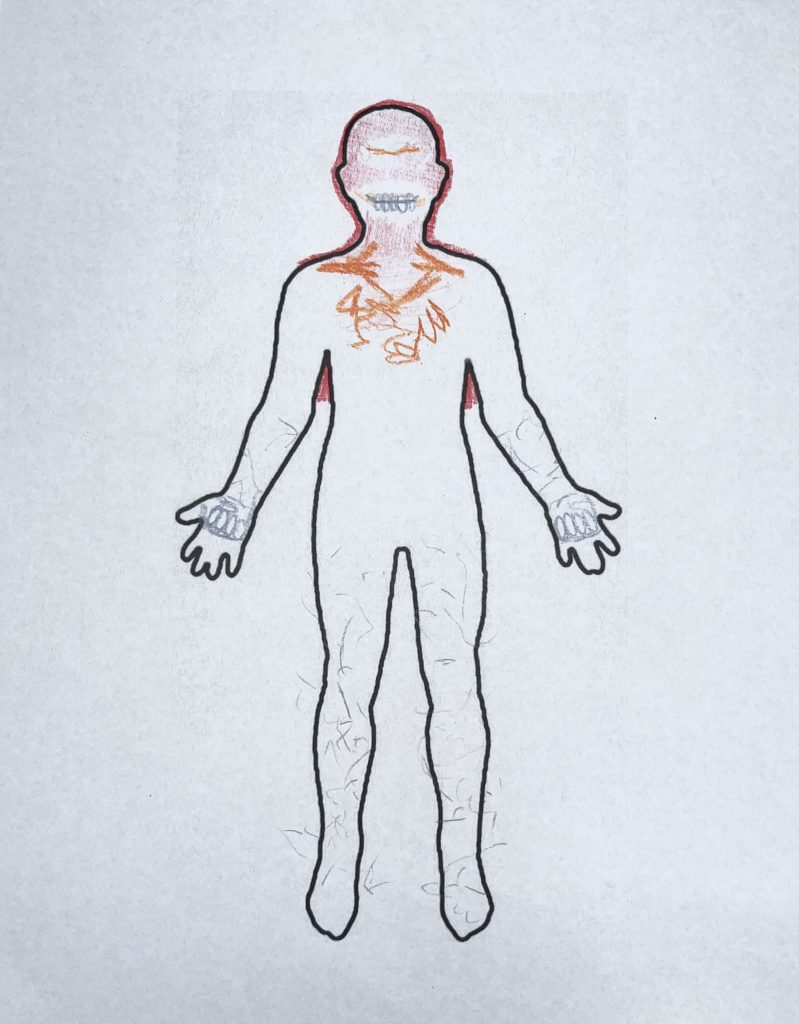Written by Katherine Heiselman, ATR-P, LPC-IT
What is mindfulness?
Have you ever found yourself becoming angry or frustrated with yourself or someone else for having a negative reaction to something? A great way to understand the concept of mindfulness is to reframe a thought like, “Ugh! I don’t even know why I’m getting upset about this right now!” to “I can feel myself getting upset about this.” The difference? The first is a judgment and the second is an observation. The founder of Mindfulness-Based Stress Reduction, Jon Kabat-Zinn, defines mindfulness as “…paying attention in a particular way: on purpose, in the present moment, and non-judgmentally.”
While a state of mindfulness can be found through activities like meditation or yoga, it can also be found in day-to-day moments when we simply stop and pause to check in with ourselves.
How can a mindfulness practice impact or improve everyday life?
Practicing mindfulness has a vast array of potential benefits including reduced rumination, stress reduction, improved working memory, focus, decreased emotional reactivity, more cognitive flexibility, and relationship satisfaction. It’s important to acknowledge that these are clearly all desirable, idealistic traits that we all want for ourselves and remember that perfection is not the goal. In fact, one of the greatest benefits of mindfulness is a greater capacity for acceptance for when things aren’t going so perfect that enables us to face difficult emotions with a sense of preparedness no matter when they may arise. Not only is this a skill we can develop in ourselves; it is also an amazing tool for parenting.
For better or for worse, our minds develop automatic responses to familiar stimuli. Think of when your child completes a task as requested, we often respond with similar phrases like “great job!”, “that was awesome!” or “thanks for doing that!” The same goes for when a child starts crying or having a tantrum. Reflect on what your response usually looks like. One purpose of practicing mindfulness from a parenting perspective is to modify these automatic responses that may not be effective in stabilizing the situation. It is a common impulse to want to fix a situation by making the difficult emotions go away. While this may work for more minor instances, asking yourself or a child not to be upset when they are clearly upset is typically ineffective.
Here are a few general guidelines for how to reframe an emotional response from a mindfulness-based perspective:
| TRY TO | TRY NOT TO | WHY? |
|---|---|---|
Name and validate emotions
|
Dismiss difficult emotions
|
Dismissal of emotions can lead to rumination, triggering even more negative emotion. When we can name them non-judgmentally, this leads towards a path of acceptance. |
| Observe and accept passing thoughts and emotions | Pass judgements on yourself or others for reacting in an unexpected or negative way | Acceptance helps to initiate the process of de-escalting from a negative response, while judgement can further escalate. |
| Notice how an emotion is affecting your body | Allow negative emotions to take over your actions | This slows down the reaction by focusing on the moment rather than allowing thoughts to spiral out of control |
| Take time to notice positive or neutral emotions and how they impact the body | Wait until negative emotions arise to practice mindfulness skills | While this is a great tool for managing difficult emotions, a great way to incorporate this way of thinking starts by noticing all emotions rather than just negative ones. |
Art Involvement

Body scans are a great way to practice mindful awareness of how our emotions impact the body. Using an outline of a body, think of ways you can use color, line, symbols, or even written labels to identify how your body is impacted by a particular emotion. This is a non-judgmental way to observe and document an emotional response. Based on this example, you could conclude that during this moment of anger, the body reacted by raising the temperature, particularly in the upper body and face, tension was observed in the hands, chest and shoulders, the heart was pounding, tingling in limbs, and teeth were clenched. While this is a more traditional example of how anger could manifest in the body, there is no right or wrong response. Think about how this body scan might have looked if the individual had just done something relaxing like receiving a massage, or listening to calming music.
Giving yourself grace
Does this mean we have to be entirely permissive and everything is now “okay?” No, introducing awareness and acceptance into the way we process our emotions is not meant to be a tool that teaches us that everything we do is right. Rather, it allows us to not pile on shame and frustration when we are already upset about something that has happened. On the flip side, it is also a great way to savor the good moments in life more strongly by noticing the positive impact it is having.
Just as you would practice being nonjudgmental in response to your emotions, we must also not judge ourselves for not perfectly maintaining this mindset. We will not always have full control of our emotions no matter how much we practice this. We are human and life happens. However, mindfulness is a skill that is strengthened by continued practice in order for it to become an automatic response in moments of heightened stress and emotionality.
Resources
Mindfulness is a broad topic and what’s covered here just barely scratches the surface. If you would like to learn more about mindfulness and mindful approaches to parenting, please check out these resources to begin your search.
https://communityofmindfulparenting.com/resources/
https://jonkabat-zinn.com/
https://www.mindful.org/meditation/mindfulness-getting-started/
https://www.headspace.com/mindful-families?origin=mindfulness-cat
References
Kabat-Zinn, J. (1994). Wherever you go, there you are. Mindfulness meditation in everyday life. New York: Hyperion
Davis, B.J. (2015). Mindful art therapy: A foundation for practice. Jessica Kingsley Publishers. https://www.apa.org/monitor/2012/07-08/ce-corner
Dumas, J. E. (2005). Mindfulness-based parent training: Strategies to lessen the grip of automaticity in families with disruptive children. Journal of Clinical Child and Adolescent Psychology, 34(4), 779-791.
